To boldly go where everyone
else has gone before...
 Having
developed Rheumatoid Arthritis (RA) at the age of 14 years old, Philippa Armstrong uses a
wheelchair to compete in agility. By developing her own method of distance handling, she has
achieved G4 and has competed in two national finals. But 39 years of RA have taken their toll
on her body and the rough ground has worn out her everyday wheelchair so she's had to stop.
Still she's passionate about helping other mobility impaired handlers, but now she needs a
little help. Having
developed Rheumatoid Arthritis (RA) at the age of 14 years old, Philippa Armstrong uses a
wheelchair to compete in agility. By developing her own method of distance handling, she has
achieved G4 and has competed in two national finals. But 39 years of RA have taken their toll
on her body and the rough ground has worn out her everyday wheelchair so she's had to stop.
Still she's passionate about helping other mobility impaired handlers, but now she needs a
little help.
I've
had Rheumatoid Arthritis, a degenerative condition for almost 40 years and persistent Anaemia
for as long as I can remember. Over time. the arthritis has destroyed and deformed all my
joint capsules, so my joints now have no natural shock absorbers
which, in practical agility terms, means crossing a field
in a wheelchair without suspension is not just painful, it actually traumatises my body. On top
of that anyone who's ever been anaemic will know how ill that makes you feel. And that's why I
canít return to agility until I have a wheelchair with suspension!
When I started agility 14 years ago, I made a stab at
handling my rescue dog Sammy on foot. Why I have no idea. I used a wheelchair most of the time
to do everything else but, I guess I was proud, and that's what I saw other people doing. But
it was, by my own account, a fairly dismal failure.
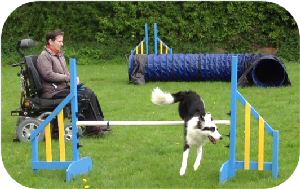 Four years later, my arthritis flared up big time,
knocking me off the agility circuit for a while. The only way I was going to be able to come
back was if I sucked up my pride and used my wheelchair. So I contacted my previous private
trainer and asked if he'd ever trained anyone 'on wheels?' He didnít actually answer the
question, but he said he'd give it a go. Four years later, my arthritis flared up big time,
knocking me off the agility circuit for a while. The only way I was going to be able to come
back was if I sucked up my pride and used my wheelchair. So I contacted my previous private
trainer and asked if he'd ever trained anyone 'on wheels?' He didnít actually answer the
question, but he said he'd give it a go.
At the time, I didn't realise that I was the only handler
in the UK training from a wheelchair. I rocked up at his field with a 4mph wheelchair that
needed 20 minutes warning if you wanted it to turn, a young dog who'd done a little bit with me
on foot, a friend and her dog and, possibly most importantly, an open mind. To say we learnt by
experience would be an understatement. We laughed a lot along the way when things went wrong
or when my very forgiving dog would do something superficially random. What I had to remember was
that she was very familiar with me using a wheelchair and that was her honest interpretation of
my cues. From there, I could work out what I did need do. By trial and error and slowly
but surely, we started to make progress. It was such a buzz. We were back, doing agility,
having fun together.
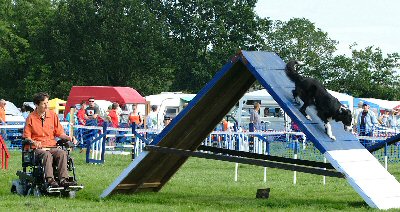 A
couple of months later, I was on a high. When term started again at my local agility club, I
asked to rejoin their classes. Their initial reaction couldn't have been more different. I honestly believe if I hadn't already been a member there
would have been no way they would have let me
through the door. Their arena was accessible. They knew me and my dog, and they knew she had
the basic skills. They even knew my wheelchair, but I think they just felt overwhelmed by the
prospect of having the unknown quantity of a wheelchair being used in their class. They said they'd
give it a go, but, I had to take out my own insurance. I had to undergo an assessment in front
of everyone else on the first night, I had to rejoin the beginners class and I. if I held the
group up taking more time than anyone else, I'd be asked to leave. It felt like a, 'Ďno
pressure then' moment. A
couple of months later, I was on a high. When term started again at my local agility club, I
asked to rejoin their classes. Their initial reaction couldn't have been more different. I honestly believe if I hadn't already been a member there
would have been no way they would have let me
through the door. Their arena was accessible. They knew me and my dog, and they knew she had
the basic skills. They even knew my wheelchair, but I think they just felt overwhelmed by the
prospect of having the unknown quantity of a wheelchair being used in their class. They said they'd
give it a go, but, I had to take out my own insurance. I had to undergo an assessment in front
of everyone else on the first night, I had to rejoin the beginners class and I. if I held the
group up taking more time than anyone else, I'd be asked to leave. It felt like a, 'Ďno
pressure then' moment.
Fortunately I'm a fairly stubborn creature and I had
total faith in my dog. We were allowed back and quickly moved up to our old class. I think they
thought I expected them to be able to teach me everything and have all the answers. If they'd
discussed it with me, they'd have realised that wasn't what I expected at all. How could they?
It wasn't their experience. I just wanted to come along, have a go, have fun and work it out
as I went along, with any advice they could offer - which was, in fact, what ultimately
happened.
I've since had several trainers contact me about
potential wheelchair using students, and I hope whatever I've said it's given them the
confidence to give it a go. Something certainly seems to be working, because there are now ten
handlers in the UK working their dogs from a wheelchair or a scooter. All things considered,
I'd call that a result.
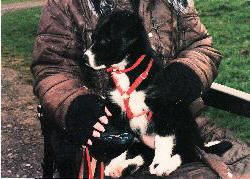 Thank
you to each and every one of you, Thank
you to each and every one of you,
As for me, I've worked with several excellent trainers. And I've had a few more health fluctuations, had a couple of
variable wheelchairs and a several different dogs. There have been times when I had no
wheelchair and then others when I've had no van. I've had the privilege of - and am passionate
about being able to - help fellow disabled handlers, be it with support, advice, encouragement,
video analysis, training videos, teaching and/or organising demonstrations. I especially
enjoy celebrating their successes with them.
And my girls have done me proud. Zippy took me to
Grade 4 and competed in two national finals and all from a wheelchair. Ha! Binky won a couple of classes by 5 and 6 seconds respectively
-
respect to Binky! And now Boogie is waiting in the wings for me to source a wheelchair with
suspension that will get us back on the circuit. Then we can see what surprises she has to offer. I
keep an open mind.
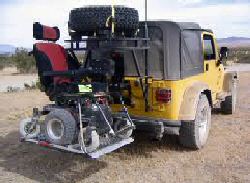 Fundraising Fundraising
Because Dog Agility is currently ineligible for sports funding and my chronic anaemia
frustratingly prohibits my staging major fundraisers, I am incredibly grateful for the kind
offers of help I am receiving from the agility community.
Sue Howlett's Cafe, for instance, is supporting me by donating their
bread pudding sales each week while Sue Rafter's Holiday Park is ring fencing some of the money they
raise over the year for me. The UKA the Aldon Show is holding a fun class on my behalf, and Boogie is
now powered by Nutriment. I have also received donations of cash and some very nice raffle
prizes for a raffle I am organising at the Kernow K9 Easter Show and I am also organising a quiz at
the UKA Phoenix Show in May. If anyone has any suggestions for further fundraising
initiatives, I'd love to hear them.
I quite fancy running - or helping to run - a Flick Flack
Challenge. It's, a fun activity that I came across at a show a couple of years ago. Essentially the
dogs snake along a long line of jumps and back. Each dog gets a certificate with their time on
it. The fastest dog of the day gets a trophy and a prize. It's open to all heights. You just pay
£1.00 to enter on the day, and can do it as many - or as few times - as you like.
I would love to organise or help organise one with all or
some of the proceeds to go towards my wheelchair. If there are any shows out which would like
to get involved with this, please get in touch.
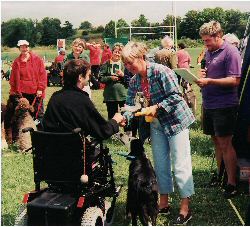 About the author... About the author...
Philippa Armstrong currently lives with WSD Zippy ( 12), WSD Binky (9) and BC
Boogie (5.) They are all pets, all trained to assist her - and all are either retired or
active agility dogs.
Zippy won
her out of Elementary (G1) and then out of Starters (G2), graduated into G4 and competed in two
National Finals. They made a Countryfile Video Diary, appeared on local news programmes and won
a couple of Achievement Awards. Not to be outdone, Binky won a
couple of her classes by 5 and 6 seconds respectively. And now she is training Boogie, who apparently
came 3rd to two G7 handlers on one of her outings.
Philippa is passionate about encouraging fellow mobility
impaired handlers. She currently admins two Facebook groups 'Agility On Wheels Ė Because We
Can and Distance Handling and is organising an agility demonstration at the Dogs for
the Disabled Summer Celebration.
Philippa can be contacted on
philippa.armstrong@lineone.net or via
www.philippaarmstrong.co.uk
First published 15 January 2014 |